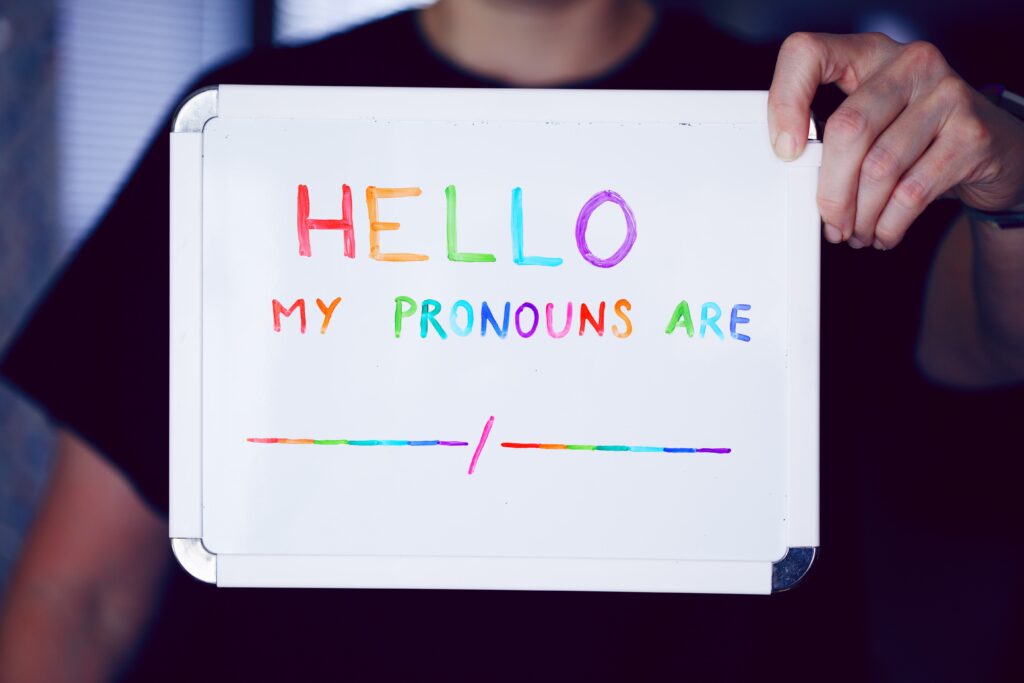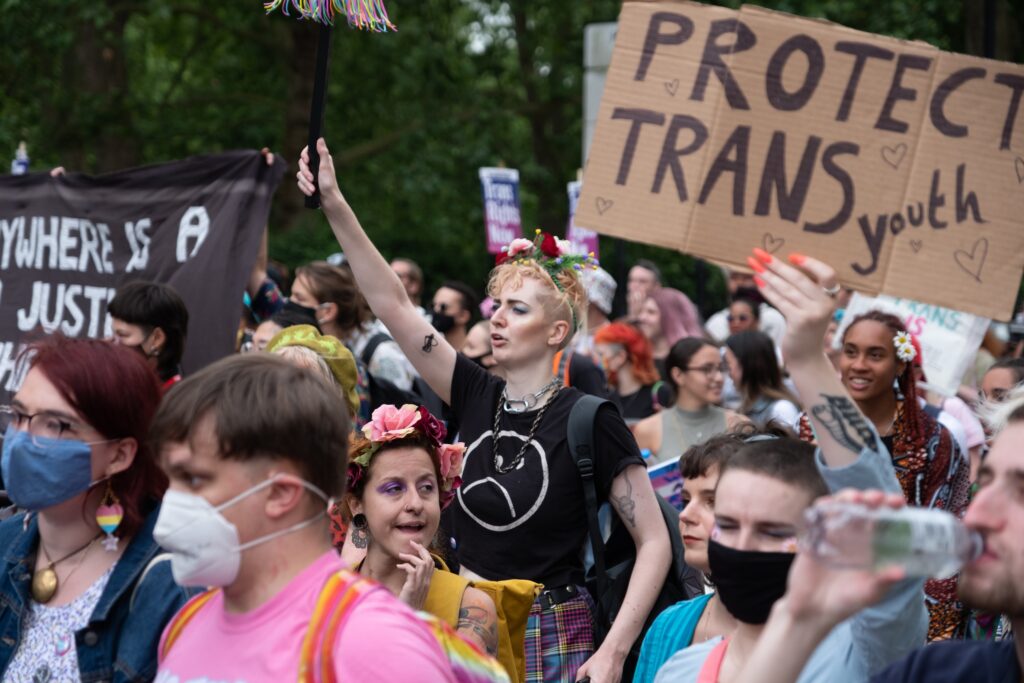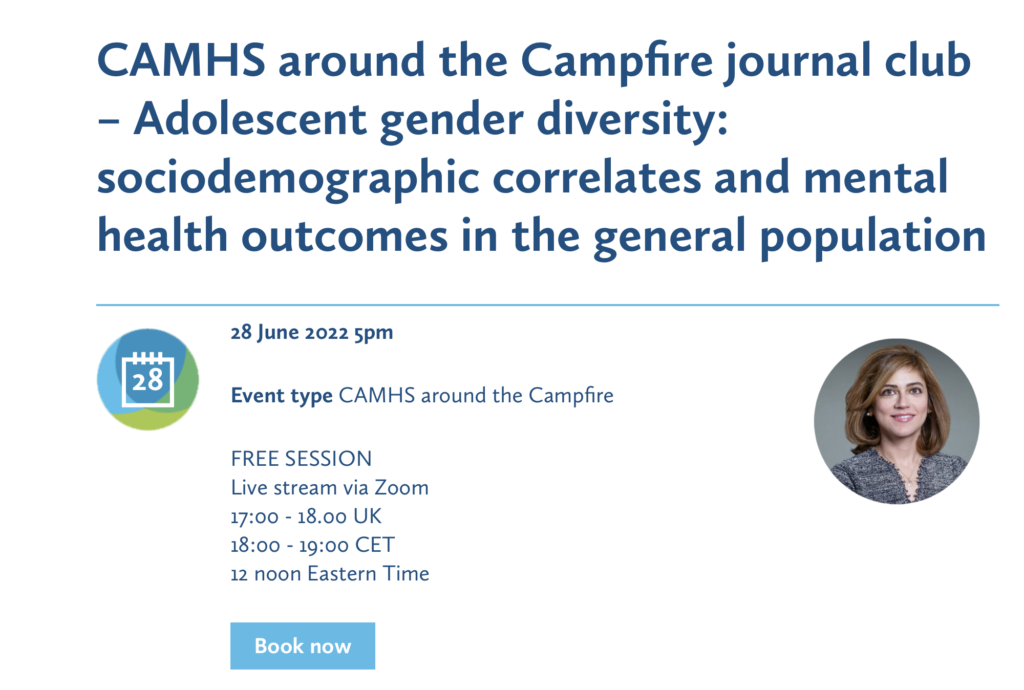
We are preparing for another hour around the #CAMHScampfire at 5-6pm BST on Tuesday 28th June. This time we’ll be discussing adolescent gender diversity with Dr. Akhgar Ghassabian, from the New York University School of Medicine, and other expert panelists. In this blog we summarise the new paper by Dr Ghassabian and colleagues. Sign up now to join us around the campfire!
Emotional distress is one of the factors that predisposes gender diverse youth to health disparities and mental illness. However:
- Estimates vary of the prevalence of gender diversity or non-conformity in the general population
- This is partly because there is no validated approach to measurement
- Many studies rely on parent reports rather than direct reports from young people
- Obtaining direct report from younger kids is not easy.
We know from studies of young people attending gender clinics that they have a higher risk of suicide, self-harm and autism spectrum disorder (ASD) than the general population. Emerging evidence also points to the mental health risks, stigma and discrimination facing gender diverse youth who have not presented to clinics.
This study aimed to address the following questions:
- What is the prevalence of gender-diverse experience amongst young adolescents within the general population?
- Is reporting of these experiences associated with sociodemographic or mental health status?

We know from studies of young people attending gender clinics that they have a higher risk of suicide, self-harm and autism spectrum disorder than the general population.
Methods
This was a prospective longitudinal cohort study based in the Netherlands.
Population
Young people in the Netherlands enrolled in the Generation R study, aged 9-11 and 13-15.
Exposure
Gender variant experience was measured in the following ways:
Achenbach System of Empirically Based Assessment (ASEBA).
“Does your child / do you wish to be of opposite sex?”:
- Not true
- Somewhat or sometimes true
- Very true or often true.
Gender Identity/ Gender Dysphoria Questionnaire for Adolescents and Adults (GIDYQ):
“Would you rather be treated as someone from the opposite sex?”:
- No
- Probably yes
- Definitely yes
The researchers defined “gender diverse experience” as any response of 2 or 3 on these instruments.
Data were acquired at the following points:
- Age 9-11 years: Parent responses to ASEBA
- Age 13-15 years: Parent and youth responses to ASEBA, youth responses to GIDYQ.
Outcomes
Mental health outcomes were measured at age 13-15 using ASEBA. Autistic traits were assessed by parents using the Social Responsiveness Scale (SRS).
Results
Prevalence of gender diversity
210 (4.3%) of 4,836 participants met the criterion of “any gender-variant experience reported by either parent or child”. Among people assigned female sex at birth, the rate was 5.9%. In those assigned male, it was 2.7%.
Relying on parent report of gender diversity in adolescents (using ASEBA), prevalence was too small (< 1%) for a meaningful comparison across age groups.
Only six young people had consistent gender-variant experience across the two age groups.
Association between gender diversity and mental health symptoms
The researchers found consistent, moderate positive associations between gender-variant experience and mental health symptoms across all eight domains, particularly anxiety, depression and social problems. There was also a significant association with autistic traits on the SRS measure.
Although moderate, the strength of this association was greater when adolescents reported their mental health symptoms, rather than their parents.
The researchers found no clear evidence of associations between gender diversity and sociodemographic characteristics.

This research from the Netherlands reported that 210 (4.3%) of 4,836 participants met the criterion of “any gender-variant experience reported by either parent or child”.
Conclusions
Around 4% of this population reported any kind of gender variant experience.
The prevalence of gender diversity among people assigned female at birth was more than double that of people assigned male.
Relying on parental reports, very few adolescents had gender diverse experience at both age groups where data was acquired (9-11 and 13-15).
Gender diversity was associated with higher mental health symptoms such as depression, anxiety or social problems at age 13-15.

This study adds weight to the evidence that gender diversity is associated with a higher risk of mental health problems in young people.
Strengths and limitations
As with any observational study, we can’t be sure whether there is causation at work here, in what direction, or whether the results are caused by unknown confounders. Note that the study was not designed for this purpose.
The study recruited a large cohort of young people born in the Netherlands between April 2002 and December 2006. Of all eligible children at birth, 61% participated in the study.
Despite the large sample size, only a small number of individuals reported gender variant experience of any sort. This is consistent with findings from previous similar studies.
The study does not allow us to say much about the longitudinal stability of gender diversity and mental health symptoms. To do this, we would need repeated measures, with youth-reported outcomes, across the whole of adolescence.
The measurement instrument does not capture the range of gender diverse experience, such as gender expression. Also, the measure did not represent the full spectrum of gender diversity such as gender-fluid. Youth-reported distress associated with gender-variant experiences would be another additional helpful measure that the study did not use.
Puberty is an important factor in the development of gender identity in adolescents, which was not addressed here.
Missing data were imputed. This affected less than 5% of the data, and multiple methods were used, so it’s unlikely to have affected the results.
The findings are broadly consistent with previous studies of gender diversity in the Netherlands and other countries. Note that the number of studies of this kind are in general limited.
Read other Mental Elf blogs on gender diversity and mental health.

Read other Mental Elf blogs on gender diversity and mental health.
#CAMHScampfire
Join us around the campfire to discuss this paper
The elves are organising an online journal club to discuss this paper with the author Akhgar Ghassabian, an independent clinical expert Julio Vaquerizo-Serrano, a young person with lived experience, and our good friends at ACAMH (the Association of Child and Adolescent Mental Health). We will discuss the research and its implications. The webinar will be facilitated by André Tomlin (@Mental_Elf).
The focus will be on critical appraisal of the research and implications for practice. Primarily targeted at CAMHS practitioners, and researchers, ‘CAMHS around the Campfire’ will be publicly accessible, free to attend, and relevant to a wider audience.
It’s taking place at 5-6pm BST on Tuesday 28th June and you can sign up for free on the ACAMH website or follow the conversation at #CAMHScampfire. See you there!
Links
Primary paper
Other references
Jaddoe VW, Mackenbach JP, Moll HA, Steegers EA, Tiemeier H, Verhulst FC, Witteman JC, Hofman A. The Generation R Study: Design and cohort profile. Eur J Epidemiol. 2006;21(6):475-84. doi: 10.1007/s10654-006-9022-0. Epub 2006 Jul 7. PMID: 16826450.
Photo credits
- Photo by Harry Quan on Unsplash
- Photo by Carsten Carlsson on Unsplash
- Photo by Sharon McCutcheon on Unsplash
- Photo by Ehimetalor Akhere Unuabona on Unsplash
- Photo by Sincerely Media on Unsplash

